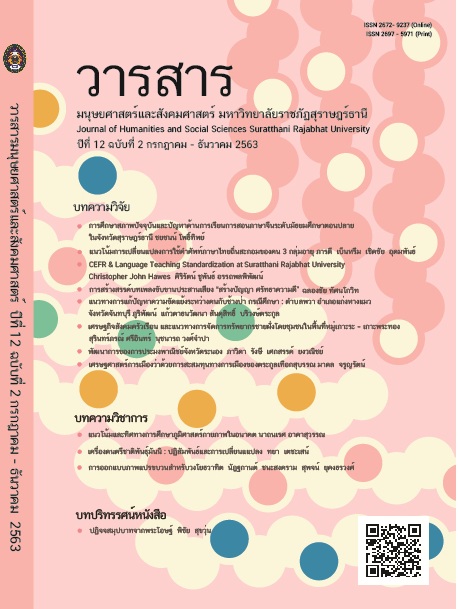Manniq-Sakai : The Music for Ethnic In Southern Thailand
Main Article Content
Abstract
This academic journal aims to study the Maniq ethnic music
Instrument that has existed in Banthat Mountain Range along Trang, Phatthalung and Yala to Kedah and Kelantan, Malaysia on issues of the change of the music by presenting aspects of social interaction towards music cultures of Maniq people, for example: 1. The change of living in the forest as well as less quantity of food and wildlife 2. The change of belief in forest spirits to the profession of Islam 3.Perceptions of modern cultures or music media. According to these factors, the Maniq people began to adapt themselves in various areas to the current social conditions in order to survive and maintain their musical cultures to be existed onwards.
Article Details

This work is licensed under a Creative Commons Attribution-NonCommercial-NoDerivatives 4.0 International License.
All published manuscripts have been verified by peer-peer professors in the fields of humanities and social sciences. Reprinting of the article must be authorized by the editorial staff.
References
Brandt, J.H. (1961). The negrito of peninsular Thailand. Journal of the Siam Society, 49, 123-158.
Ismail, E., Amini, F., Razak, S.A., Zaini, H.M., Farhour, R. & Zilfafalil, B.A. (2013). Peninsular Malaysia's negrito orang asli and its theory of African origin. Sains Malaysiana, 42(7), 921-926.
Miller, T.E. & Williams, S. (1998). The Garland Ensyclopedia of World Music. New York: Garland Publishing.
Blench, R. (2006). Musical instruments and musical practice as markers of the Austronesian expansion post-Taiwan. Manila, Philippines: University of the Philippines.
Lawergren, B. (1988). The origin of musical instruments and sounds. Anthropos, 83, 31-45.


